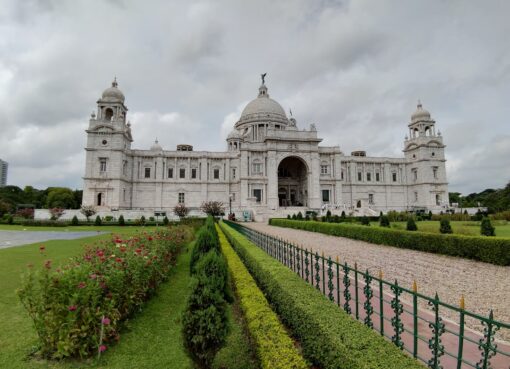Viva Colombia: The Ultimate Travel Guide

Colombia, located in the northern part of South America, is a country known for its rich cultural heritage, diverse landscapes, and warm, welcoming people. With a population of over 50 million, Colombia is the third most populous country in Latin America, and its capital city, Bogotá, is one of the largest cities in the region. The country is bordered by Venezuela to the east, Brazil to the southeast, Peru to the south, Ecuador and Panama to the west, and the Caribbean Sea to the north. Colombia is a country of contrasts, with bustling cities, lush rainforests, towering mountains, and pristine beaches. Its diverse geography and climate make it a popular destination for travelers seeking a wide range of experiences, from exploring ancient ruins to relaxing on tropical islands.
Colombia has a long and complex history, with indigenous peoples inhabiting the region for thousands of years before the arrival of Spanish conquistadors in the 16th century. The country gained independence from Spain in 1819 and has since experienced periods of political instability and armed conflict. However, in recent years, Colombia has made great strides in improving its security and has become an increasingly popular destination for tourists seeking to explore its natural beauty and vibrant culture. From the colorful streets of Cartagena to the lush coffee plantations of the Andes, Colombia offers a wealth of experiences for travelers looking to immerse themselves in the country’s unique blend of traditions and modernity.
Key Takeaways
- Colombia is a diverse and vibrant country located in South America, known for its rich culture, stunning landscapes, and warm hospitality.
- Top destinations in Colombia include the historic city of Cartagena, the lush coffee region, the vibrant capital city of Bogota, and the breathtaking Tayrona National Park.
- Colombian cuisine is a delicious blend of indigenous, African, and Spanish influences, with popular dishes like arepas, bandeja paisa, and empanadas.
- Cultural experiences in Colombia range from exploring ancient archaeological sites to attending colorful festivals and immersing in the lively music and dance scene.
- Outdoor adventures in Colombia are plentiful, with opportunities for hiking in the Andes, exploring the Amazon rainforest, and relaxing on the pristine beaches of the Caribbean coast.
- When visiting Colombia, it’s important to stay informed about safety precautions, such as avoiding certain areas known for crime and being mindful of your belongings in crowded places.
- In conclusion, Colombia offers a wealth of experiences for travelers, and by following safety tips and being respectful of local customs, visitors can have a memorable and enjoyable trip to this beautiful country.
Top Destinations in Colombia
1. Cartagena: This historic port city on Colombia’s Caribbean coast is a UNESCO World Heritage site known for its well-preserved colonial architecture and vibrant cultural scene. Visitors can wander through the narrow streets of the walled Old Town, explore the imposing Castillo San Felipe de Barajas, and relax on the nearby beaches of Bocagrande. The city also boasts a lively nightlife and a diverse culinary scene, making it a must-visit destination for anyone traveling to Colombia.
2. Medellín: Once known as the stronghold of notorious drug lord Pablo Escobar, Medellín has undergone a remarkable transformation in recent years and is now a thriving metropolis with a burgeoning arts and culture scene. The city is home to innovative urban projects such as the Metrocable, a cable car system that connects the city’s hillside neighborhoods, as well as a number of museums, galleries, and parks. Visitors can also take day trips to nearby attractions such as the picturesque town of Guatapé and its famous rock formation, El Peñol.
3. Bogotá: As the capital and largest city in Colombia, Bogotá is a bustling metropolis with a rich history and diverse cultural offerings. Visitors can explore the historic La Candelaria neighborhood, home to colonial-era buildings and the impressive Gold Museum, or take a trip up to Monserrate for panoramic views of the city. Bogotá also boasts a thriving culinary scene, with numerous restaurants serving up traditional Colombian dishes as well as international cuisine.
4. The Coffee Triangle: Colombia is famous for its high-quality coffee, and the Coffee Triangle region offers visitors the chance to learn about the coffee production process while surrounded by stunning natural scenery. The towns of Manizales, Pereira, and Armenia are all located in this region and serve as great bases for exploring coffee farms, hiking through lush landscapes, and experiencing the warm hospitality of the local people.
Colombian Cuisine and Food Culture
Colombian cuisine is as diverse as its landscapes, with each region offering its own unique flavors and ingredients. One of the most iconic dishes in Colombian cuisine is bandeja paisa, a hearty meal consisting of rice, beans, ground meat, plantains, avocado, arepa (a type of corn cake), and chicharrón (fried pork belly). Another popular dish is sancocho, a hearty soup made with meat, potatoes, yuca (cassava), plantains, and other vegetables. Seafood lovers will also find plenty to enjoy in Colombia, particularly along the Caribbean coast where dishes such as ceviche and fried fish are staples.
In addition to its traditional dishes, Colombia is also known for its wide variety of tropical fruits, many of which are not commonly found outside of the country. Visitors can sample fruits such as lulo, guanabana, maracuyá (passion fruit), and borojó at local markets or street stalls. Colombian cuisine also features a number of sweet treats, including arequipe (a type of caramel spread), buñuelos (fried cheese balls), and obleas (thin wafers filled with caramel or jam). Whether dining at a high-end restaurant or enjoying street food from a vendor, visitors to Colombia are sure to find something to satisfy their taste buds.
Cultural Experiences in Colombia
| City | Number of Museums | Number of Theaters | Number of Cultural Festivals |
|---|---|---|---|
| Bogotá | 58 | 35 | Over 50 |
| Medellín | 28 | 20 | Over 30 |
| Cartagena | 12 | 10 | Over 20 |
Colombia’s rich cultural heritage is evident in its music, dance, art, and festivals. One of the most famous Colombian musical genres is vallenato, which originated in the Caribbean region and is characterized by its lively accordion melodies and upbeat rhythms. Visitors can experience vallenato music at local bars and clubs or attend one of the many music festivals held throughout the year. Another popular musical style is salsa, which has deep roots in Colombian culture and can be enjoyed at dance clubs in cities such as Cali and Medellín.
Colombia is also home to a number of indigenous communities that have preserved their traditional customs and crafts. In regions such as the Sierra Nevada de Santa Marta and the Amazon rainforest, visitors can learn about indigenous traditions such as weaving, pottery-making, and spiritual ceremonies. Many indigenous communities also offer homestay experiences where visitors can learn about their way of life firsthand.
Festivals play an important role in Colombian culture, with each region celebrating its own unique traditions and customs. One of the most famous festivals is the Carnival of Barranquilla, a colorful extravaganza featuring parades, music, dance, and elaborate costumes. Other popular festivals include the Flower Festival in Medellín, the Black and White Carnival in Pasto, and the Feria de Cali in Cali. These events offer visitors a chance to immerse themselves in Colombian culture and witness the country’s vibrant spirit firsthand.
Outdoor Adventures in Colombia
Colombia’s diverse landscapes provide ample opportunities for outdoor enthusiasts to explore its natural beauty. The country is home to several national parks and protected areas where visitors can hike through cloud forests, spot exotic wildlife, and marvel at stunning waterfalls. One of the most famous national parks is Tayrona National Park on the Caribbean coast, which features pristine beaches, lush jungles, and ancient ruins left behind by indigenous peoples.
For those seeking more adrenaline-pumping activities, Colombia offers opportunities for rock climbing, whitewater rafting, paragliding, and mountain biking. The town of San Gil is known as the adventure sports capital of Colombia and offers a range of activities for thrill-seekers. Visitors can also explore underground caves in regions such as Villa de Leyva or go scuba diving off the coast of Providencia Island.
Colombia’s diverse geography also makes it an ideal destination for birdwatching enthusiasts, with over 1,900 bird species found throughout the country. The Andes Mountains are particularly rich in birdlife, with species such as the Andean condor, hummingbirds, and tanagers commonly spotted by birdwatchers. Whether trekking through remote wilderness areas or exploring coastal ecosystems, outdoor adventurers will find no shortage of opportunities to connect with nature in Colombia.
Safety and Travel Tips for Visiting Colombia

While Colombia has made significant progress in improving its security situation in recent years, it’s important for travelers to exercise caution and stay informed about local conditions. Visitors should be aware that certain regions of Colombia may still be affected by armed conflict or criminal activity, so it’s advisable to research travel advisories from reliable sources before planning a trip. In general, major tourist destinations such as Cartagena, Medellín, Bogotá, and the Coffee Triangle are considered safe for visitors, but it’s always wise to remain vigilant and take common-sense precautions such as avoiding displaying valuables in public and using reputable transportation services.
When it comes to transportation within Colombia, travelers have several options including domestic flights, buses, and taxis. Domestic flights are a convenient way to cover long distances within the country and are offered by several airlines with good safety records. Buses are another popular mode of transportation for getting around Colombia’s cities and regions; however, travelers should be aware that road conditions can vary and journeys may take longer than expected due to traffic or weather conditions. Taxis are widely available in urban areas but it’s important to use licensed taxis or reputable ride-sharing services to ensure safety.
In terms of health considerations, visitors to Colombia should be aware that certain regions may have specific health risks such as mosquito-borne diseases or altitude-related issues in mountainous areas. It’s advisable to consult with a healthcare professional before traveling to ensure that necessary vaccinations or medications are up to date. Travelers should also take precautions such as using insect repellent and staying hydrated while exploring outdoor areas.
Conclusion and Final Tips for Traveling in Colombia
In conclusion, Colombia offers a wealth of experiences for travelers seeking to immerse themselves in its rich cultural heritage and natural beauty. From exploring historic cities such as Cartagena and Bogotá to embarking on outdoor adventures in national parks and remote wilderness areas, there’s something for everyone in this diverse country. Visitors can also indulge in delicious Colombian cuisine, experience traditional music and dance performances, and participate in vibrant festivals that showcase the country’s lively spirit.
When planning a trip to Colombia, it’s important for travelers to stay informed about local conditions and take necessary precautions to ensure their safety. By researching travel advisories from reliable sources and exercising common-sense practices while exploring the country’s attractions, visitors can enjoy a memorable and rewarding experience in Colombia. Whether sipping coffee on a picturesque plantation or dancing salsa into the early hours of the morning, Colombia offers endless opportunities for discovery and adventure that will leave a lasting impression on anyone who visits this captivating country.
If you’re planning a trip to Colombia, you’ll want to make sure you manage your time effectively to make the most of your experience. Check out this article on 10 Tips for Better Time Management to help you plan your itinerary and make the most of your visit to Viva Colombia.
FAQs
What is Viva Colombia?
Viva Colombia is a low-cost airline based in Colombia. It operates domestic and international flights to various destinations.
When was Viva Colombia founded?
Viva Colombia was founded in 2008 and began operations in 2012.
What destinations does Viva Colombia serve?
Viva Colombia serves domestic destinations within Colombia, as well as international destinations in South and Central America.
What is Viva Colombia’s fleet size?
As of 2021, Viva Colombia has a fleet size of around 20 aircraft, consisting mainly of Airbus A320s.
What is Viva Colombia’s business model?
Viva Colombia operates as a low-cost carrier, offering no-frills, budget-friendly air travel with the option to purchase additional services and amenities.
Is Viva Colombia a safe airline to fly with?
Viva Colombia has a strong safety record and adheres to international safety standards. It is considered a safe airline to fly with.
What are the baggage policies of Viva Colombia?
Viva Colombia has specific baggage policies regarding size, weight, and fees for both carry-on and checked baggage. It is important for passengers to review these policies before traveling.
Does Viva Colombia offer in-flight amenities?
As a low-cost carrier, Viva Colombia offers basic in-flight amenities. Passengers have the option to purchase additional services such as in-flight meals, entertainment, and seat selection.
Leave a Reply
You must be logged in to post a comment.



Leave a Comment